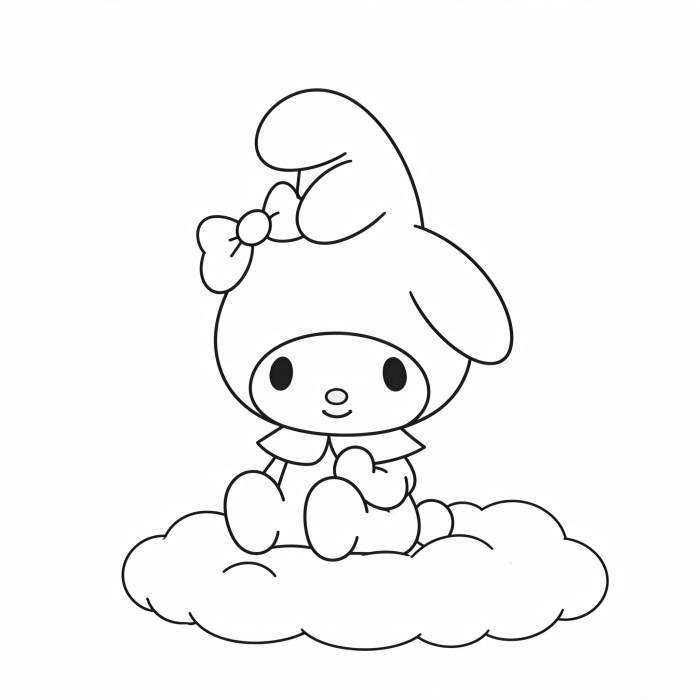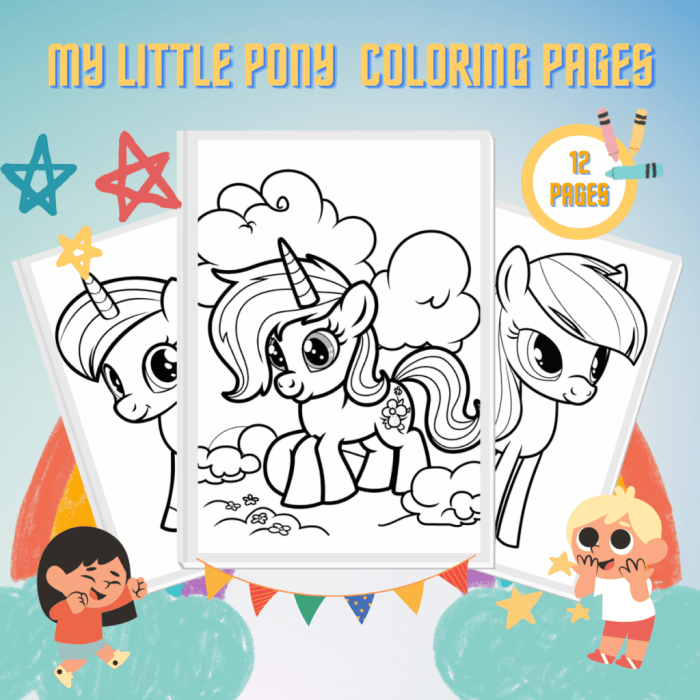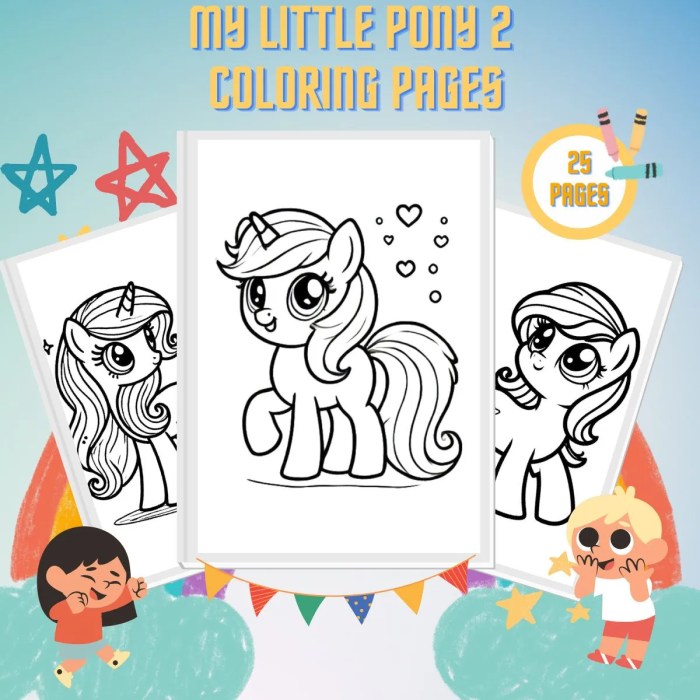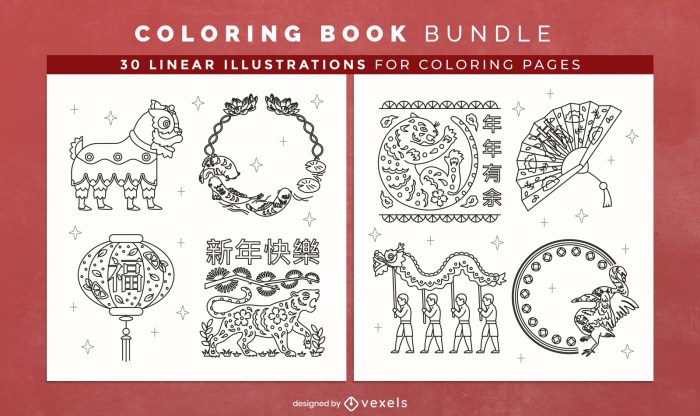Content and Design Aspects: My Coloring Book Free

My coloring book free – High-quality visuals are paramount in a free coloring book, even more so than in a paid one. Since users aren’t investing financially, the perceived value relies heavily on the attractiveness and appeal of the artwork. A poorly designed coloring book, regardless of being free, risks being dismissed and unused, harming the creator’s reputation and limiting its potential reach.
Therefore, a strategic approach to design is crucial for success.The design considerations for creating visually appealing and engaging coloring pages vary significantly depending on the target age group. Careful attention to line weight, color palettes, and composition ensures the final product is both enjoyable and age-appropriate. A poorly executed design can lead to frustration, particularly for younger children who may struggle with intricate details or overly complex compositions.
Line Weight Considerations for Different Age Groups
Line weight plays a crucial role in determining the difficulty and suitability of a coloring page. Thicker lines are generally easier for younger children to color within, minimizing frustration and encouraging engagement. Thinner lines, on the other hand, offer a greater challenge and are more suitable for older children and adults who may appreciate the finer details and increased complexity.
For instance, a coloring page designed for preschoolers might utilize lines that are 3-5mm thick, while a page intended for teenagers or adults could incorporate lines as thin as 1-2mm, or even incorporate variations in line weight for added visual interest.
Color Palette Selection and its Impact, My coloring book free
The selection of color palettes directly influences the overall mood and aesthetic of the coloring book. Bright, vibrant colors are often more appealing to younger children, while more muted or sophisticated palettes might be preferred by older audiences. For example, a coloring page featuring a whimsical fairy might utilize a palette of bright pinks, purples, and greens, while a coloring page depicting a serene landscape could employ earth tones and calming blues and greens.
Consideration should also be given to the potential for color combinations to clash or create unintended visual effects.
Compositional Strategies for Visually Engaging Pages
Effective composition is key to creating visually engaging coloring pages. The arrangement of elements within the page should be balanced and visually appealing, guiding the eye naturally across the design. Techniques like the rule of thirds, leading lines, and negative space can be utilized to create a sense of depth and visual interest. For example, a coloring page featuring an animal could be composed using the rule of thirds, placing the animal off-center to create a more dynamic and visually engaging composition.
My free coloring book offers a variety of designs, from whimsical animals to intricate mandalas. For those seeking something a bit spookier, you might enjoy the unique style found in the coco wyo coloring book pages spooky collection; it’s a great contrast to my more cheerful offerings. Ultimately, my coloring book aims to provide a relaxing creative outlet for everyone, regardless of preferred theme.
Similarly, leading lines could be used to draw the eye towards a central focal point, while negative space can help to create a sense of airiness and balance.
Five Diverse Coloring Book Themes
Creating diverse themes broadens the appeal of a free coloring book, attracting a wider audience.
- Mythical Creatures: This theme features illustrations of unicorns, dragons, griffins, and other fantastical beings. The illustrations could incorporate intricate details and elaborate designs, appealing to both children and adults. One illustration might depict a majestic unicorn grazing in a field of flowers, while another could showcase a fierce dragon guarding a treasure hoard.
- Ocean Life: This theme focuses on marine animals and underwater scenes. Illustrations could include colorful coral reefs, playful dolphins, graceful sea turtles, and mysterious sharks. One illustration could depict a vibrant coral reef teeming with life, while another could showcase a pod of dolphins leaping through the waves.
- Floral Designs: This theme celebrates the beauty of flowers and plants. Illustrations could range from simple daisies and roses to more complex botanical drawings. One illustration might feature a delicate bouquet of wildflowers, while another could showcase a detailed illustration of a single rose.
- Geometric Patterns: This theme appeals to those who enjoy intricate and symmetrical designs. Illustrations could include mandalas, tessellations, and other geometric patterns. One illustration could be a complex mandala with radiating patterns, while another could be a repeating geometric pattern that could be extended infinitely.
- Cute Animals: This theme focuses on adorable animals, such as puppies, kittens, pandas, and bunnies. Illustrations should be simple, cute, and appealing to young children. One illustration could depict a playful puppy chasing its tail, while another could showcase a cuddly kitten curled up asleep.
Legal and Ethical Considerations

Creating and distributing a free coloring book, while seemingly straightforward, involves navigating legal and ethical considerations to avoid potential issues. Understanding copyright law and ethical practices is crucial for ensuring your project remains compliant and responsible. Failure to do so could lead to legal action or damage your reputation.
Copyright Implications of Using Copyrighted Images
Using copyrighted images or designs in your free coloring book without permission constitutes copyright infringement. This is a serious legal issue, with potential consequences ranging from cease-and-desist letters to expensive lawsuits. Copyright protects original creative works, including illustrations, characters, and even specific designs. Even if your coloring book is free, the unauthorized use of copyrighted material can still result in legal repercussions.
The copyright holder retains exclusive rights to reproduce, distribute, and display their work. Therefore, only use images and designs that are explicitly in the public domain or for which you have obtained proper licensing agreements. Examples of public domain images include works whose copyright has expired or works specifically released into the public domain by their creators.
Ethical Practices for Creating and Distributing Free Coloring Book Content
Ethical considerations extend beyond legal compliance. Transparency and attribution are key aspects of responsible content creation. If you use elements inspired by other artists’ work, acknowledge their influence. Clearly state that your coloring book is free for personal use only, avoiding any ambiguity about commercial usage rights. Be mindful of the potential impact of your work.
For example, avoid creating content that could be interpreted as offensive, discriminatory, or harmful. Responsible distribution also means providing accurate information about your coloring book and its origins. Avoiding misleading claims or false advertising is crucial for maintaining ethical standards.
Risks of Downloading Resources from Untrusted Sources
Downloading coloring page resources from untrusted sources carries significant risks. These sources might offer copyrighted material without permission, exposing users to potential legal issues if they use the downloaded content. Furthermore, untrusted sources might contain malware or viruses that can infect users’ devices. Such malicious software can steal personal information, damage files, or even disable your computer. Always prioritize reputable sources for downloading free coloring book resources.
Look for websites or platforms with established reputations and clear terms of use. Checking user reviews and feedback can also help you assess the trustworthiness of a source. In short, prioritizing safety and legal compliance should always guide your selection of online resources.
Marketing and Distribution

Getting your free online coloring book into the hands (or rather, onto the screens) of potential users requires a well-defined marketing and distribution strategy. Successful dissemination hinges on leveraging the power of online communities and social media, coupled with a straightforward download process.A multi-pronged approach is crucial for maximizing reach and engagement. This includes targeted social media campaigns, collaborations with relevant online communities, and a user-friendly download system.
The chosen distribution method will also impact the overall success, with each option presenting its own advantages and disadvantages.
Social Media Marketing Strategy for a Free Online Coloring Book
Effective social media marketing involves creating engaging content tailored to the platforms used. For example, visually appealing posts showcasing the coloring book’s artwork should be shared regularly on platforms like Instagram and Pinterest, emphasizing the relaxing and creative aspects. On platforms like Facebook and Twitter, interactive posts encouraging users to share their completed coloring pages could generate user-generated content and build a community around the book.
Consider using relevant hashtags to increase visibility and reach a wider audience. Paid advertising on these platforms could also be explored to boost reach to a more targeted demographic. Regular posting, consistent branding, and interactive elements will maximize engagement and build anticipation for the coloring book.
Creating a User-Friendly Download Process
A simple and intuitive download process is vital to ensure a positive user experience. The download link should be prominently displayed on the website, with clear instructions on how to download and save the coloring book file. The file should be in a universally accessible format like PDF, ensuring compatibility across various devices. A brief thank you page after the download could encourage users to share the coloring book with friends and family or follow your social media channels for future content.
Consider offering the coloring book in various sizes to cater to different printing preferences. Minimizing the number of steps involved in the download process is paramount to reduce user frustration and abandonment.
Comparison of Distribution Methods
Website download and email subscription represent two primary methods for distributing free coloring book content. A website download offers immediate access and simplicity; users can download the coloring book directly without providing any personal information. However, this method relies heavily on organic traffic and may not reach a wide audience. Email subscription, on the other hand, allows for building an email list and targeted marketing.
Users provide their email address in exchange for the coloring book, enabling future communication about new releases or related content. This method fosters a more direct relationship with users, but requires email marketing expertise and adherence to privacy regulations. Both methods can be used concurrently to maximize reach and engagement. The best approach depends on the overall marketing goals and resources available.


